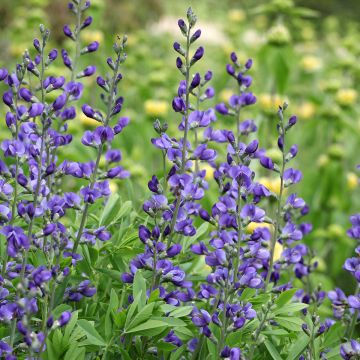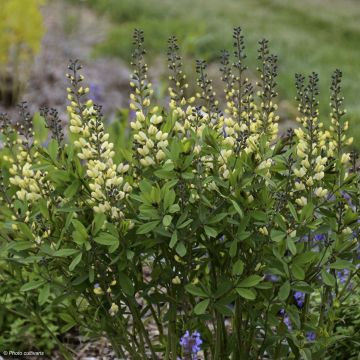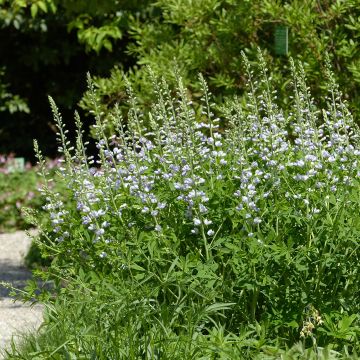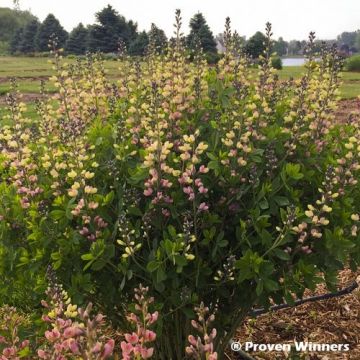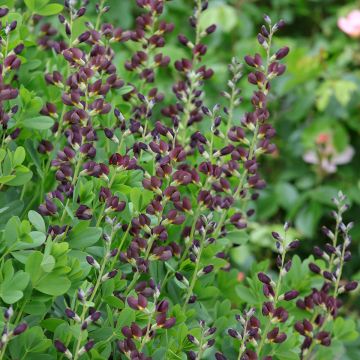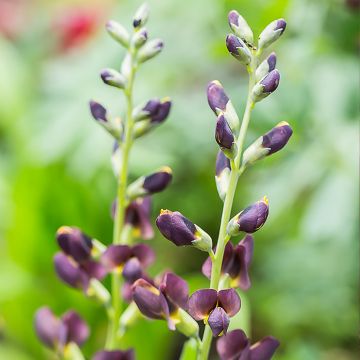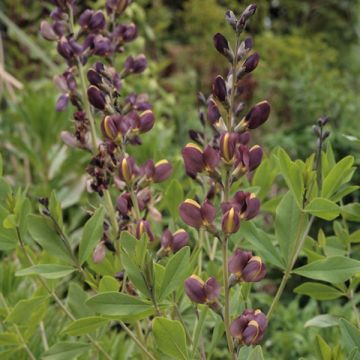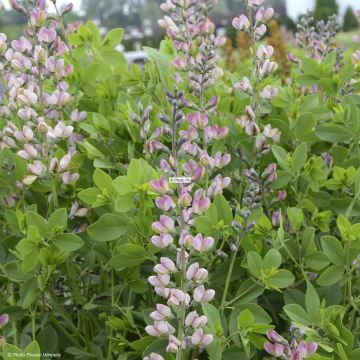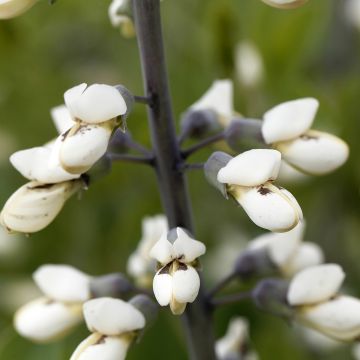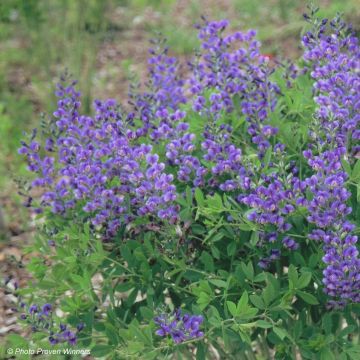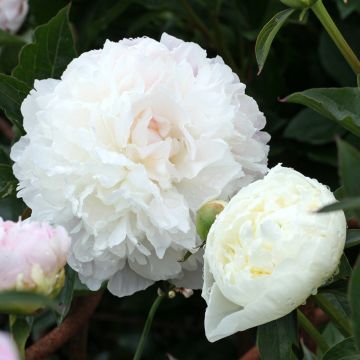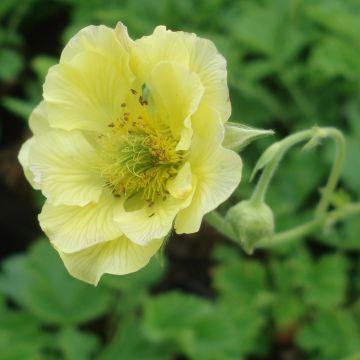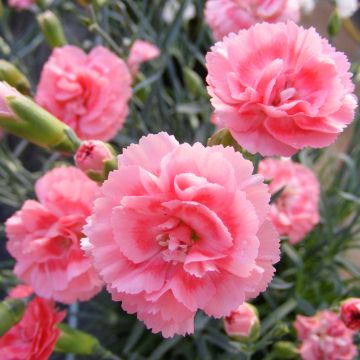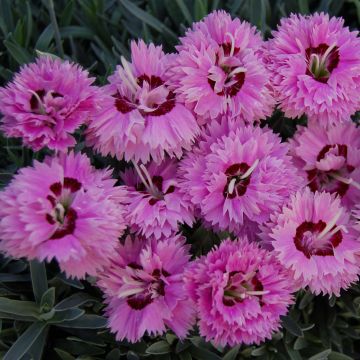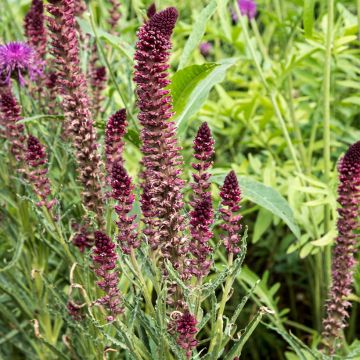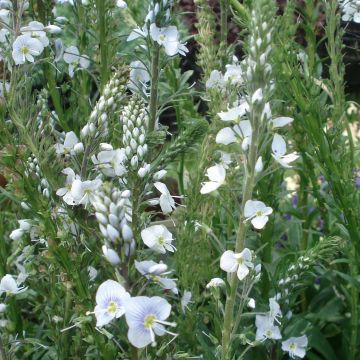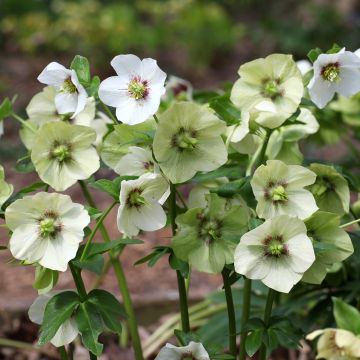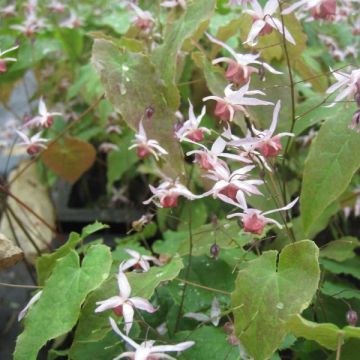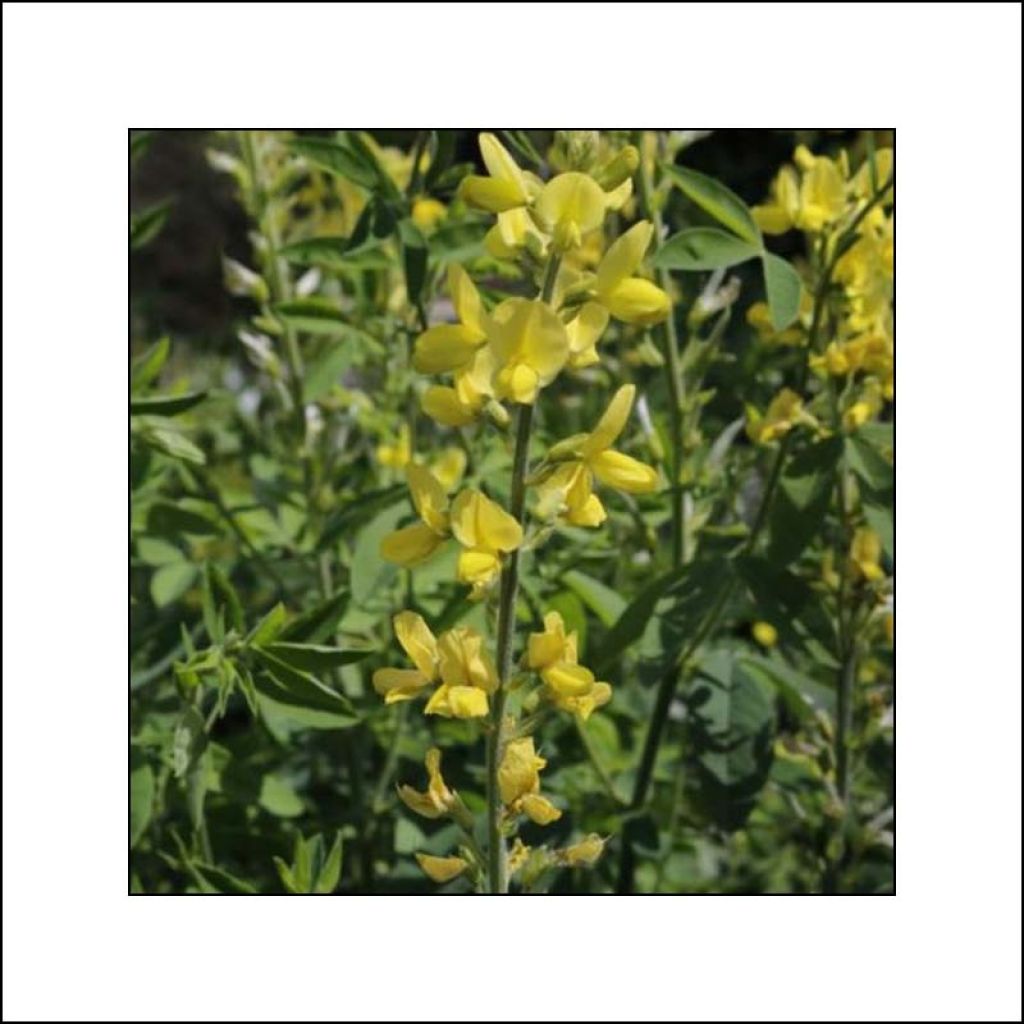

Thermopsis chinensis
Thermopsis chinensis
Thermopsis chinensis
Chinese False Lupin
This item cannot be shipped to the selected country
Delivery charge from €5.90
More information
Schedule delivery date,
and select date in basket
This plant carries a 12 months recovery warranty
More information
We guarantee the quality of our plants for a full growing cycle, and will replace at our expense any plant that fails to recover under normal climatic and planting conditions.
From €5.90 for pickup delivery and €6.90 for home delivery
Express home delivery from €8.90.
Does this plant fit my garden?
Set up your Plantfit profile →
Description
Thermopsis chinensis is an original perennial of the large family of lupins, still little known and planted in gardens despite its many qualities. More floriferous than baptisia, and less rigid than lupin, this durable and undemanding Asian plant is also even easier to succeed in any garden soil that is not too poor. On a clump of glaucous and silvery trifoliate foliage, anthracite grey floral stems bearing slightly loose clusters shine with light yellow pea flowers during a long period, from spring to early summer. Plant this thermopsis in full sun, in the company of blue or white flowers; success is guaranteed!
Thermopsis chinensis, sometimes called Chinese False Lupin, is a herbaceous and rhizomatous perennial plant of the Fabaceae family. It is native to central and eastern China, and its natural habitat includes grassy slopes, open forests, but also riverbanks. In the garden, it is a tolerant and easy-to-care-for plant as long as it has sun or light shade and the soil is not too wet. Its deciduous foliage disappears in winter.
This Thermopsis forms a bushy clump reaching an average of 60cm (24in) in all directions within a few years. Flowering begins in May, sometimes as early as April depending on the climate, and continues for at least 2 months, until June-July. Above a bunch of leafy stems appear spikes of 20-25cm (8-10in), whose main stem is hairy and dark grey. It is adorned with very pretty dark grey-violet buds, which open into butterfly-like flowers in two shades of yellow. On the same spike, dark stems, prune-coloured buds, and soft yellow and sweet lemon-yellow flowers coexist, creating a very elegant display. After pollination by insects, the flowers give way to pods containing seeds that germinate easily when fresh. The foliage, which disappears in winter, is also very ornamental. It is composed of leaves that are slightly tinged with blue and grey, divided into three rounded leaflets, resembling those of alfalfa or clover. This perennial plant is capable of living for many years in the garden without any particular care once well established.
Thermopsis are close relatives of lupins and baptisias, which are much better known, but they are more floriferous than baptisias, less rigid in their posture, and much less demanding in terms of soil than lupins. They have very robust roots that allow them to live as long as shrubs in our gardens. They just need time to settle. The golden lupin will find its place in a natural and countryside border. It is superb in the company of white, orange, or blue flowers, allowing for numerous combinations according to the tastes of each gardener. For example, it can be combined with 'Ballerina' tulips or 'Orange Bouquet' tulips, both orange flowers. It also pairs well with herbaceous salvias such as 'Mainacht', 'Nepeta Six Hills Giant', or with a 'Pocahontas' penstemon.
Report an error about the product description
Thermopsis chinensis in pictures
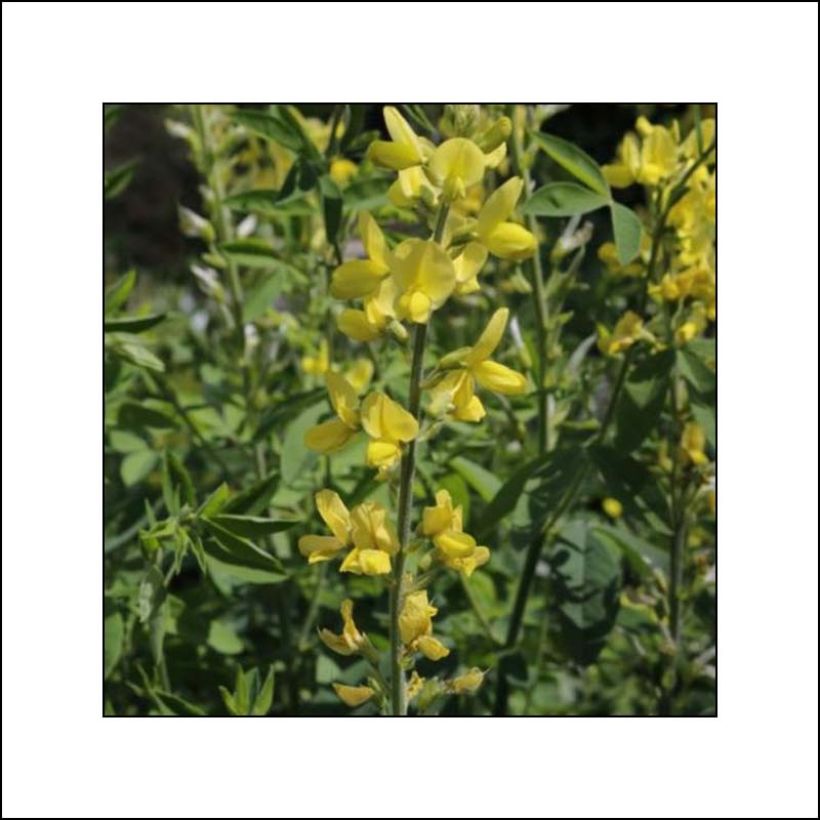

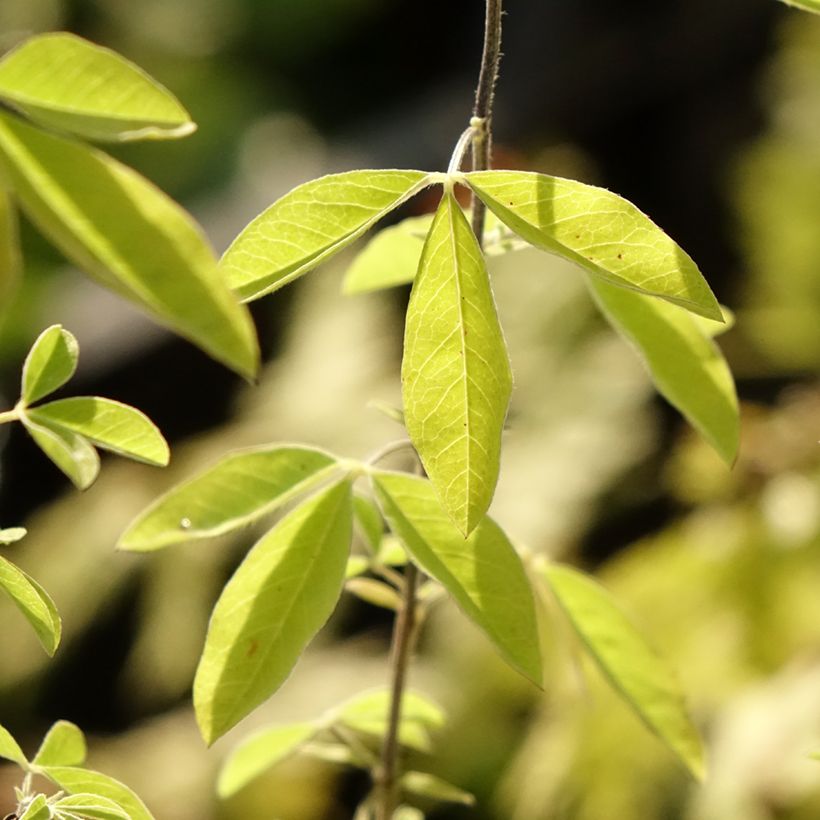

Flowering
Foliage
Plant habit
Botanical data
Thermopsis
chinensis
Fabaceae
Chinese False Lupin
Cultivar or hybrid
Other Baptisia
Planting and care
The cultivation of Thermopsis chinensis presents no particular difficulty, it is a very hardy and undemanding plant with regards to the soil if it is sufficiently rich. Mix compost with the soil in your garden.
In the first year of cultivation, the plant may appear to be vegetating, this is normal, its root system spreads deeply into the soil. Add a small handful of phosphate fertilizer (it is a root stimulant) which you will mix with the soil at the time of planting. Add 1/3 sand and 1/3 gravel to heavy soil to ensure good drainage. Water regularly to promote growth, as well as during the first two summers if the soil is very dry. In the third year, the plant will be established, will not require any special care, and will be able to flower profusely for many years!
Planting period
Intended location
Care
This item has not been reviewed yet - be the first to leave a review about it.
Spring flowering perennials
Haven't found what you were looking for?
Hardiness is the lowest winter temperature a plant can endure without suffering serious damage or even dying. However, hardiness is affected by location (a sheltered area, such as a patio), protection (winter cover) and soil type (hardiness is improved by well-drained soil).

Photo Sharing Terms & Conditions
In order to encourage gardeners to interact and share their experiences, Promesse de fleurs offers various media enabling content to be uploaded onto its Site - in particular via the ‘Photo sharing’ module.
The User agrees to refrain from:
- Posting any content that is illegal, prejudicial, insulting, racist, inciteful to hatred, revisionist, contrary to public decency, that infringes on privacy or on the privacy rights of third parties, in particular the publicity rights of persons and goods, intellectual property rights, or the right to privacy.
- Submitting content on behalf of a third party;
- Impersonate the identity of a third party and/or publish any personal information about a third party;
In general, the User undertakes to refrain from any unethical behaviour.
All Content (in particular text, comments, files, images, photos, videos, creative works, etc.), which may be subject to property or intellectual property rights, image or other private rights, shall remain the property of the User, subject to the limited rights granted by the terms of the licence granted by Promesse de fleurs as stated below. Users are at liberty to publish or not to publish such Content on the Site, notably via the ‘Photo Sharing’ facility, and accept that this Content shall be made public and freely accessible, notably on the Internet.
Users further acknowledge, undertake to have ,and guarantee that they hold all necessary rights and permissions to publish such material on the Site, in particular with regard to the legislation in force pertaining to any privacy, property, intellectual property, image, or contractual rights, or rights of any other nature. By publishing such Content on the Site, Users acknowledge accepting full liability as publishers of the Content within the meaning of the law, and grant Promesse de fleurs, free of charge, an inclusive, worldwide licence for the said Content for the entire duration of its publication, including all reproduction, representation, up/downloading, displaying, performing, transmission, and storage rights.
Users also grant permission for their name to be linked to the Content and accept that this link may not always be made available.
By engaging in posting material, Users consent to their Content becoming automatically accessible on the Internet, in particular on other sites and/or blogs and/or web pages of the Promesse de fleurs site, including in particular social pages and the Promesse de fleurs catalogue.
Users may secure the removal of entrusted content free of charge by issuing a simple request via our contact form.
The flowering period indicated on our website applies to countries and regions located in USDA zone 8 (France, the United Kingdom, Ireland, the Netherlands, etc.)
It will vary according to where you live:
- In zones 9 to 10 (Italy, Spain, Greece, etc.), flowering will occur about 2 to 4 weeks earlier.
- In zones 6 to 7 (Germany, Poland, Slovenia, and lower mountainous regions), flowering will be delayed by 2 to 3 weeks.
- In zone 5 (Central Europe, Scandinavia), blooming will be delayed by 3 to 5 weeks.
In temperate climates, pruning of spring-flowering shrubs (forsythia, spireas, etc.) should be done just after flowering.
Pruning of summer-flowering shrubs (Indian Lilac, Perovskia, etc.) can be done in winter or spring.
In cold regions as well as with frost-sensitive plants, avoid pruning too early when severe frosts may still occur.
The planting period indicated on our website applies to countries and regions located in USDA zone 8 (France, United Kingdom, Ireland, Netherlands).
It will vary according to where you live:
- In Mediterranean zones (Marseille, Madrid, Milan, etc.), autumn and winter are the best planting periods.
- In continental zones (Strasbourg, Munich, Vienna, etc.), delay planting by 2 to 3 weeks in spring and bring it forward by 2 to 4 weeks in autumn.
- In mountainous regions (the Alps, Pyrenees, Carpathians, etc.), it is best to plant in late spring (May-June) or late summer (August-September).
The harvesting period indicated on our website applies to countries and regions in USDA zone 8 (France, England, Ireland, the Netherlands).
In colder areas (Scandinavia, Poland, Austria...) fruit and vegetable harvests are likely to be delayed by 3-4 weeks.
In warmer areas (Italy, Spain, Greece, etc.), harvesting will probably take place earlier, depending on weather conditions.
The sowing periods indicated on our website apply to countries and regions within USDA Zone 8 (France, UK, Ireland, Netherlands).
In colder areas (Scandinavia, Poland, Austria...), delay any outdoor sowing by 3-4 weeks, or sow under glass.
In warmer climes (Italy, Spain, Greece, etc.), bring outdoor sowing forward by a few weeks.

































